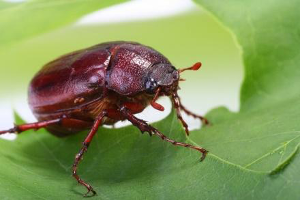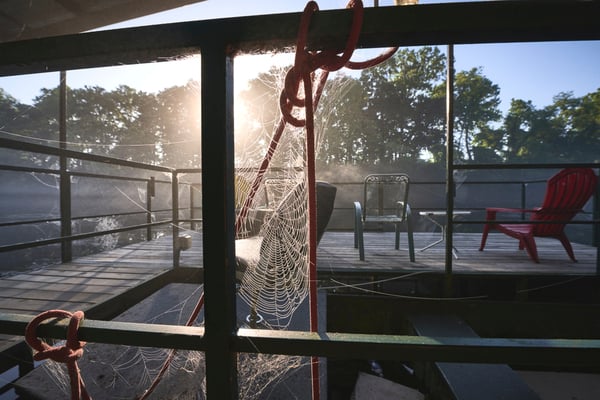June bugs swarm around your porch lights throughout the summer. They bump into you at night and they stick to your skin when you try to pull them off. In the morning you find them belly up on the ground. But what exactly is a June bug?
June bugs comprise nearly 300 species of beetles that are relatives of the Egyptian scarab. Just as the ancient Egyptians saw the scarab as a symbol of renewal, the June bug takes its name from its clockwork appearance during late spring and early summer when life blooms again. There’s a lot more to June bugs than the clumsy and sometimes crunchy brown bugs that litter summer sidewalks.
What Do June Bugs Look Like?
June bugs are ½-1” long. Most varieties are reddish-brown in color, but they can also be dark green. Their bellies have a shiny metallic sheen to them and are also brown or green. June bugs have two sets of wings under a smooth protective cover. They have barbed legs that allow them to stick to nearly any surface.
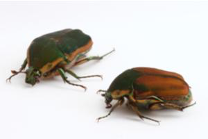
June bug larvae, also known as grubs, are fat 1” white worms with brown heads and legs. You may notice larvae underground when you till your lawn or garden.
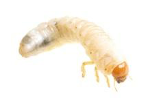
The June Bug Life Cycle
Female June bugs lay 50-200 eggs below the ground surface from midsummer to fall. In 3-4 weeks, the larvae (grubs) hatch and spend between three months and three years underground. During this time, they eat grass and other roots near the ground’s surface. In the winter they burrow deep to hibernate.
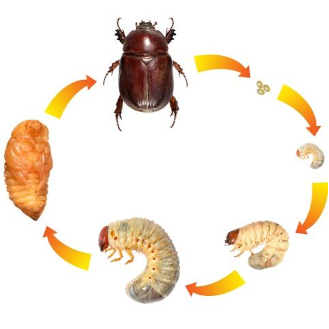
In spring and early summer, the larvae grow into pupae that turn into full adult June bugs after three weeks. Adult June bugs are primarily leaf eaters and spend their summer dining on plants and trees before they lay their eggs in fall. Adult June bugs live about one year. They will burrow into the ground, like grubs, to hibernate for the winter.
Do June Bugs Bite?
No. June bugs have small mandibles designed to grasp and chew leaves, flowers and bark but they are not capable of biting humans. June bugs can be a nuisance, but they are not a health risk and carry no diseases.
Do June Bugs Fly?
Yes. June bugs have two sets of wings, but they are not very adept fliers. Because of their large heavy bodies, June bugs can only fly for short periods of time before becoming exhausted. When June bugs overexert themselves, they often end up on their backs. This is why you may see them flipped over trying to right themselves.
The Problem with June Bugs
June bugs themselves are relatively benign. Even though they may dine on your shrubbery and bump into your head, there usually aren’t enough of them to make a serious impact.
The problem is the larvae. Those 50-200 eggs a June bug lays become hungry grubs that eat the roots of your lawn and garden. Signs that you have a grub infestation include:
- Brown or gray patches in your lawn.
- Small holes in grass.
- Increased moles (they eat grubs)
- Missing swaths of grass.
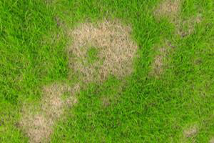
In years when the grub population booms, this could mean serious trouble for your yard.
How to Get Rid of June Bugs and Their Larvae
To prevent damage to your lawn, you can take these steps to control the June bug population near you:
- Trap the adults. Use a narrow bottle filled with a mixture of water and molasses or other sweet liquid to attract June bugs. By reducing the adults, you limit the number of eggs laid in your yard.
- Milky spores. Milky spores are a naturally occurring soil-dwelling bacteria that kill grubs. Named such because when grubs ingest them, their insides turn milky. This works best in warmer climates where soil is moist.
- Beneficial nematodes. These are microscopic worms that work similarly to the milky spores. When garden pests ingest nematodes, they become ill and die. These work best in mid to late summer when infestations are at their peak.
- Till your soil. Search out damaged areas of your lawn and uproot the soil. Chances are, you’ll find a bunch of fat grubs. Remove them by hand (they make great fishing bait).
- Commercial pesticides. Pesticides are rarely used for June bugs or grubs and only in the case of serious infestation. September is the best time to apply them after gardens are harvested but grubs are still close to the surface. If you have a bigger June bug problem, a pest control expert can help recommend the best course of treatment.
Pest Control Help for All Summer Bugs
No one knows for certain why June bugs are attracted to light, but we do know that Plunkett’s is your best bet for pest control in the Midwest and surrounding areas. Call or contact us today for help with your pesky problems to keep your home and garden safe for everyone.

